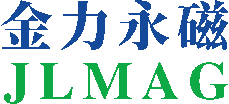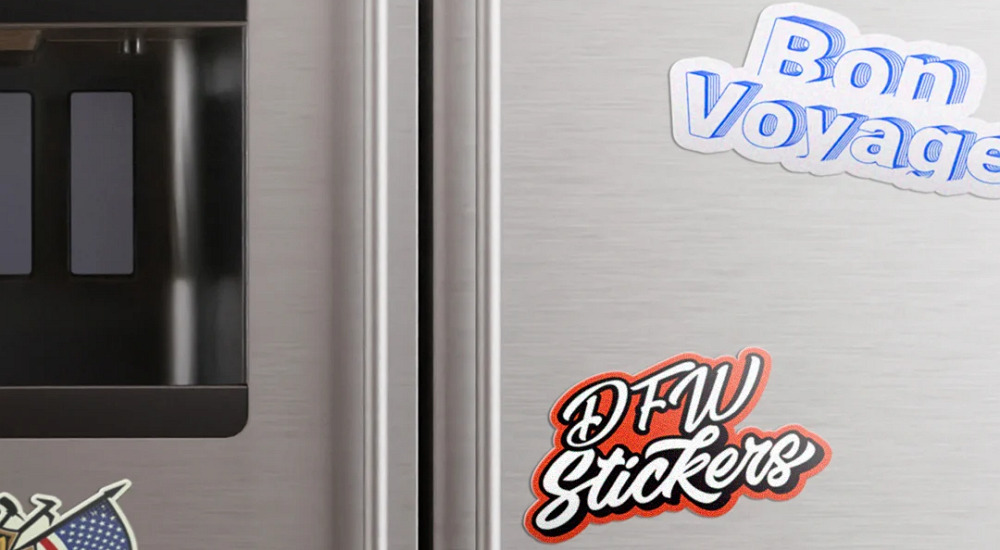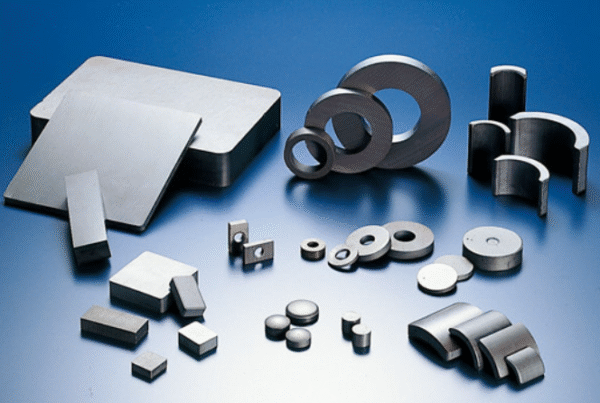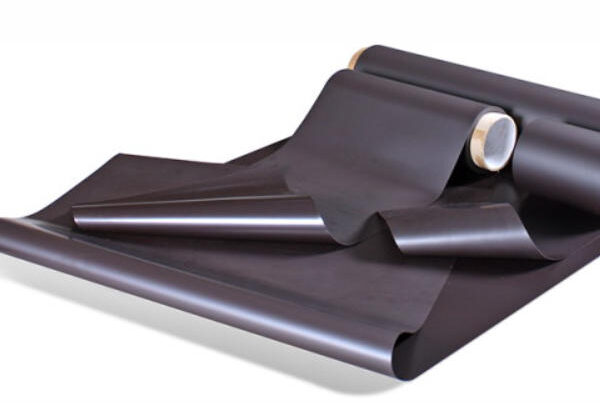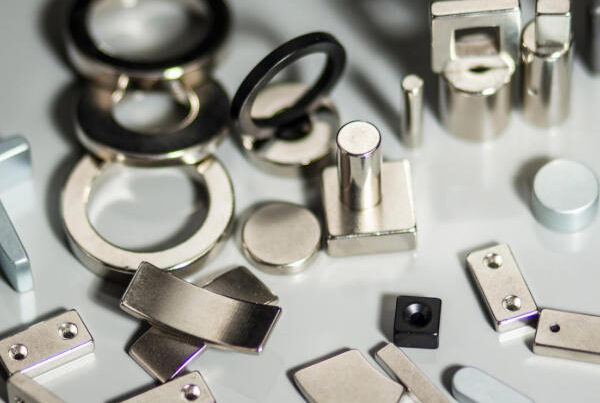En el campo de la industria moderna y los bienes de consumo, Los imanes de goma se han convertido en componentes magnéticos indispensables en productos publicitarios, sealing strips, motor induction and children’s toys due to their softness, easy processing and diversified applications. Sin embargo, to produce customized rubber magnets that truly meet customer needs is not as simple as “one mold press”. From the ratio of raw materials, the confirmation of specifications, the control of process flow to the final quality inspection, every step is crucial.
- Raw material selection: the key to determining the performance of rubber magnets
Rubber magnets are mainly made of magnetic powder and polymer rubber substrate. Commonly used magnetic powders are ferrite (such as SrO·6Fe₂O₃) or rare earth magnetic powders, among which ferrite is currently the most common choice, taking into account both cost-effectiveness and magnetic properties. The content of magnetic powder directly affects the magnetic force of the final product. The ratio is usually between 70% y 90%. The higher the content, the stronger the magnetic properties, but the softness will decrease.
The substrate is mostly NBR (nitrile rubber) or CPE (chlorinated polyethylene), which have good oil resistance and weather resistance respectively. Different application scenarios have different requirements for flexibility, resistencia a la temperatura, y resistencia al envejecimiento, so materials must be selected accurately according to customer purposes. Por ejemplo, rubber magnets used for indoor advertising magnets pay more attention to softness and printing adaptability; rubber magnets used for motor rotor induction must have higher magnetic properties.
- Customer demand analysis: customized specification confirmation process
Customized production first requires clear and accurate demand communication.
In actual orders, customers will put forward the following main requirements:
- Size and shape: Is it a sheet, coil or special-shaped punching part? What is the size tolerance range?
- Thickness: Common thickness ranges from 0.5mm to 10mm, and different thicknesses have a significant impact on magnetic force and flexibility.
- Surface treatment: Is it necessary to cover PVC film, double-sided tape or surface printing?
- Magnetic force requirements: Gauss values are usually used to express magnetic flux density, such as ≥1000 Gauss.
- Magnetic method: single-sided multi-pole magnetization, radial magnetization or special requirements for charging and demagnetization.
A professional manufacturer usually confirms every detail with the customer through drawings, samples, and even video conferences to prevent deviations in the production process.
- Production process: the whole process from mixing to molding
The production process of rubber magnets can be summarized into five steps:
Raw material mixing
Mix the magnetic powder with rubber in a precise ratio and mix it at high temperature through an internal mixer to ensure that the magnetic powder is evenly dispersed.
Calendering molding
The mixed rubber material is extruded into sheets or coils of the required thickness on a calender, and the surface flatness must be controlled within ±0.05mm.
Cutting and punching
Carry out vertical and horizontal cutting or mold punching according to the customer’s size, and complex shapes require customized knife molds.
Magnetization treatment
The product is magnetized by pulse magnetization equipment, and the magnetic pole arrangement and pole pitch can be set according to customer needs.
Coating and printing
If the customer needs lamination or printing Logo, the surface treatment is completed at this stage.
Each of the above processes has a direct impact on the quality of the product, so the equipment accuracy and operating specifications are very critical.
- Magnetization method: the core process that affects the performance of use
The magnetization method of rubber magnets is one of the most important links in customization, which directly determines the usage scenario and performance. There are mainly the following types:
Single-sided multi-pole magnetization
The magnetic force is concentrated on one side, which is often used in refrigerator magnets and advertising magnetic strips, which is convenient for adsorption with metal surfaces.
Double-sided multi-pole magnetization
There is magnetic force on both sides, which can be used for magnetic sealing strips or bidirectional adsorption.
Radial magnetization
Mainly used in products that require circumferential magnetic fields such as motor rotors.
Directional charging and demagnetization
In some special applications, such as sensor matching, it is necessary to first magnetize and then partially demagnetize to produce a specific induction effect.
Usually, different magnetization methods require different coil molds and magnetization power supplies, and manufacturers must have corresponding process capabilities.
- Inspection and quality control: ensure that each batch of products is stable and consistent
In order to ensure that every piece of rubber magnet received by the customer meets the standards, a strict quality inspection process is essential. The main inspection items include:
Size and flatness
Electronic calipers and flatness gauges are used to ensure that the thickness, width and length meet the tolerance.
Magnetic flux density detection
Use a Gauss meter to sample the surface magnetism of each batch to check whether it meets customer requirements.
Peel strength and flexibility test
Laminated products need to test the peel strength to prevent delamination during use.
Aging resistance and temperature resistance test
Weather resistance, high and low temperature resistance performance inspection for special requirements.
Conclusión
From the scientific selection of raw materials, to the precise control of the production process, to rigorous quality inspection, the production of customized rubber magnets is a systematic project that combines technology and management. Behind every seemingly ordinary magnetic film is a deep understanding of performance, process and customer needs. If you need to learn more about or customize rubber magnet products, please visit the JLMAG website to provide you with professional consultation and solutions.
